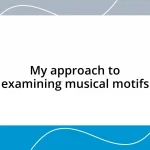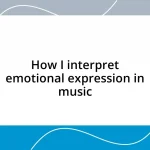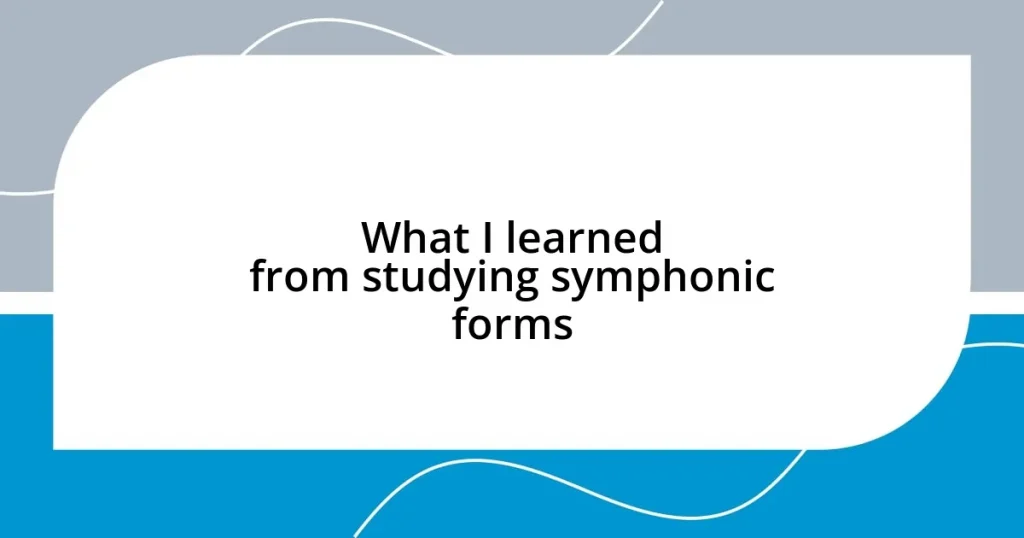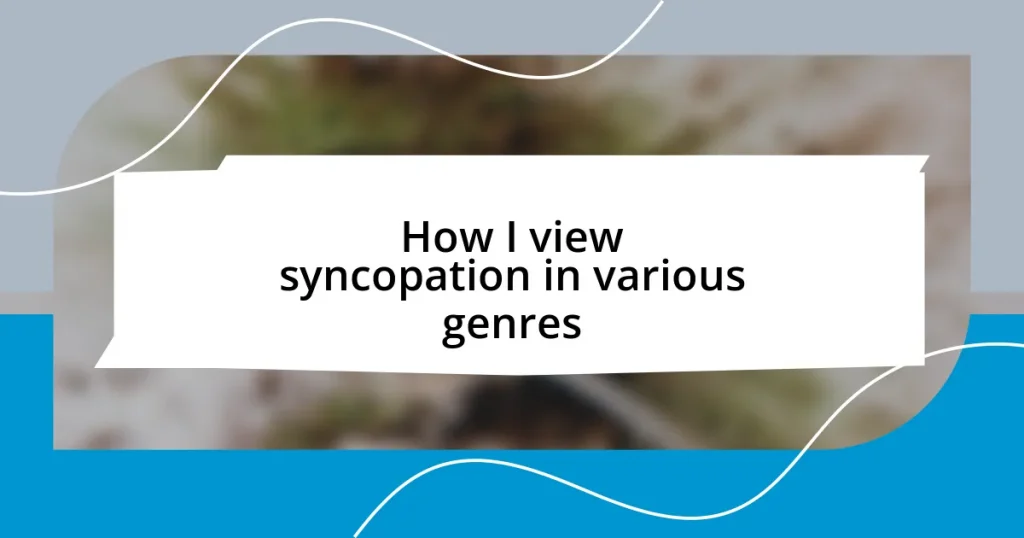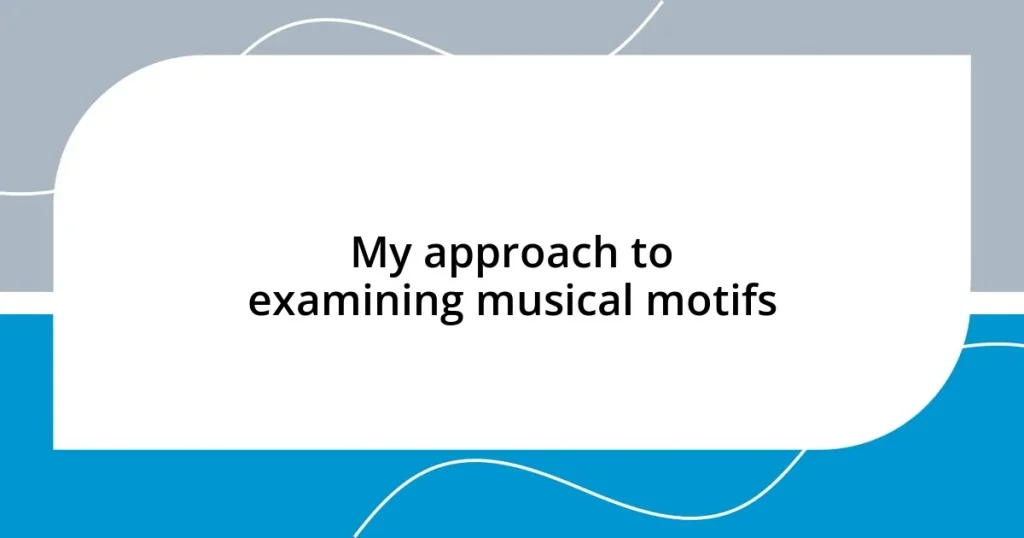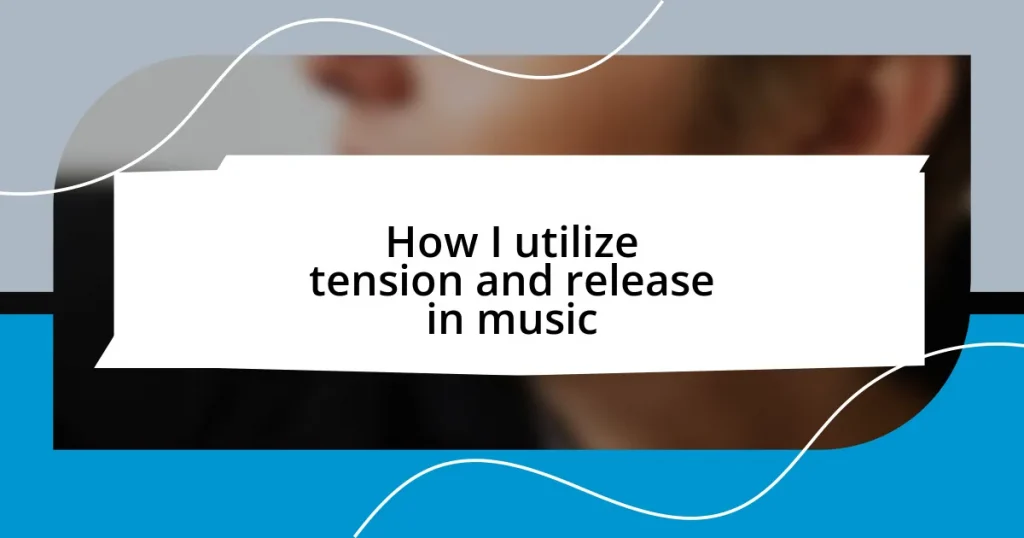Key takeaways:
- Symphonic forms create a structured emotional journey, allowing each movement to tell its own story within a larger narrative.
- Key characteristics of symphonic forms include clear structures, theme development, and emotional contrast, shaping the listener’s experience.
- Influential composers like Beethoven, Brahms, Mahler, and Tchaikovsky have significantly shaped the genre, each adding their unique emotional depth.
- Analyzing symphonic movements enhances compositional skills and critical listening, enabling a deeper connection to the music.
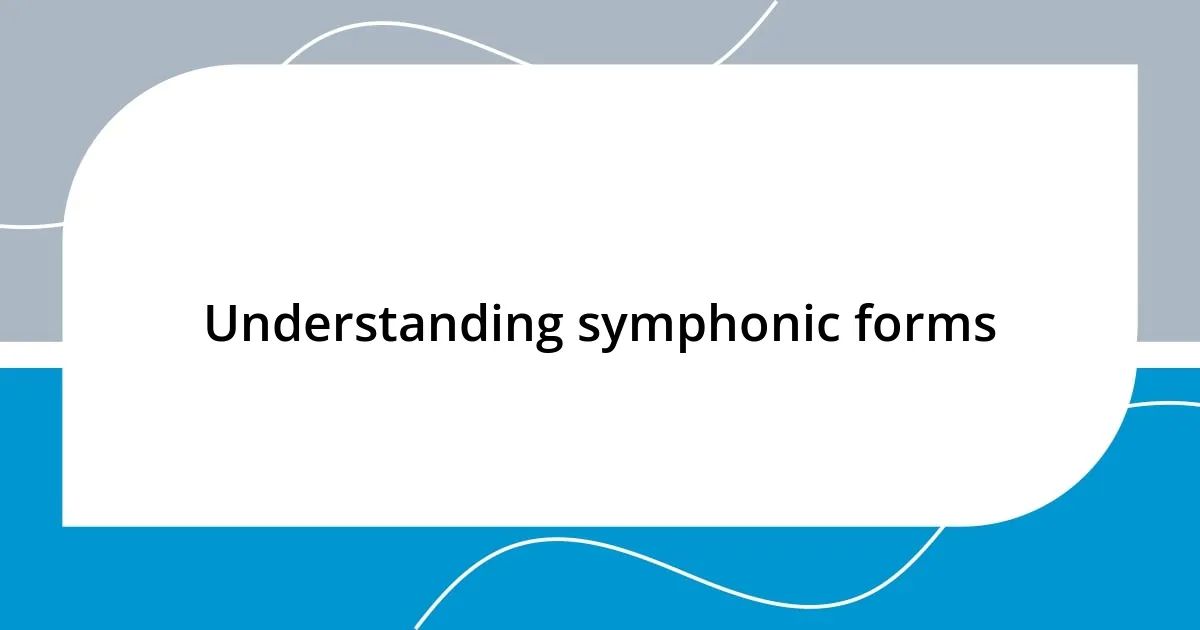
Understanding symphonic forms
Symphonic forms are fascinating structures that guide the way a symphony unfolds. When I first delved into these forms, I was captivated by how they create a journey that both the composer and listener embark on together. Have you ever noticed how each movement seems to tell its own story while still fitting into a larger narrative?
I recall attending a live orchestra performance where I was mesmerized by the seamless transitions between movements. It struck me how the sonata form, for instance, establishes themes in a way that makes their return feel like a homecoming. This emotional resonance is something I strive to capture in my own musical explorations.
The deeper I explored, the more I realized the power of contrast within symphonic forms. Each section, whether it’s a lyrical adagio or a spirited scherzo, provides both tension and resolution. I can’t help but wonder—what makes a listener connect with one movement over another? For me, it’s often the emotional highs and lows that make these forms so compelling.
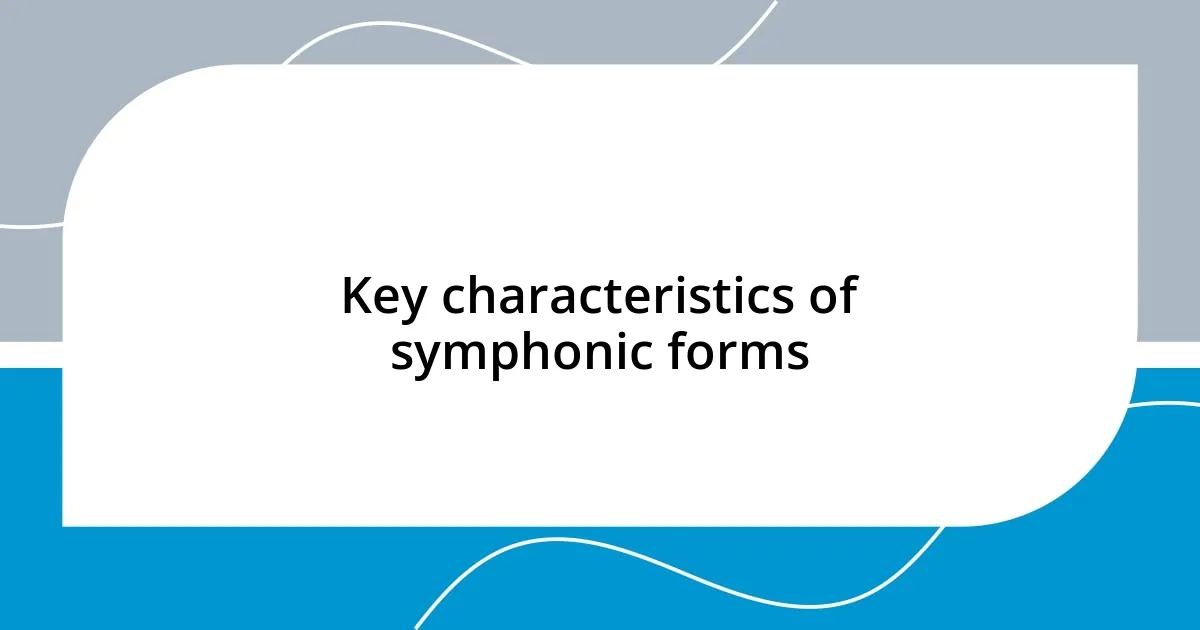
Key characteristics of symphonic forms
The beauty of symphonic forms lies in their structured creativity, which creates a framework that supports the emotional depth of the music. From my experiences, I’ve learned that each form has its own language that conveys distinct emotions and movements. For example, when I first encountered the rondo form, I was fascinated by how its recurring theme provided a sense of familiarity while also introducing new ideas with each return.
Key characteristics of symphonic forms include:
- Clear Structure: Each form follows a specific format, such as sonata, rondo, or theme and variations.
- Contrast and Unity: There’s a balance of contrasting themes and sections that create drama while maintaining an overall coherence.
- Theme Development: Themes are presented, developed, and varied, allowing for a rich exploration of musical ideas.
- Emotional Journey: Each movement evokes a range of emotions, often leading the listener through highs and lows.
- Transitions: Smooth transitions between movements enhance the narrative flow and maintain listener engagement.
Reflecting back on a particularly striking movement I experienced, the shift from a tumultuous adagio to a jubilant finale felt like life itself—full of challenges but ultimately leading to triumph. It’s these key characteristics that make symphonic forms not just a study of music, but a reflection of human experience.
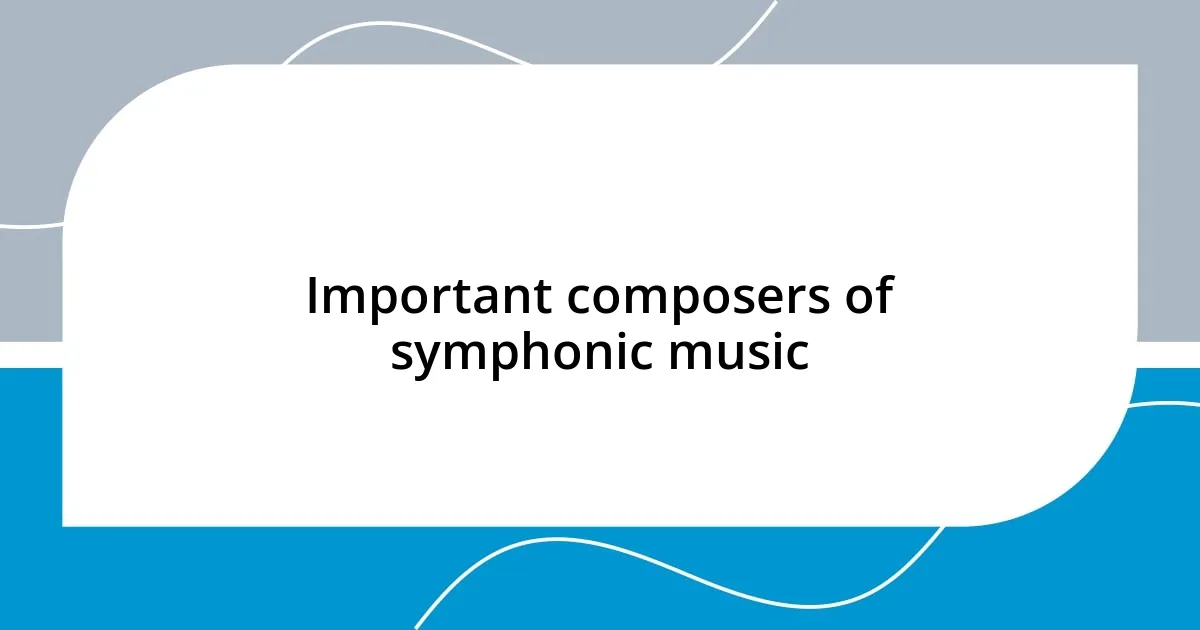
Important composers of symphonic music
The world of symphonic music has been shaped by numerous influential composers, each leaving an indelible mark on the genre. When I think about this, names like Beethoven and Brahms immediately come to mind. Their works are not just compositions; they are earnest conversations with the listener, capturing a whole spectrum of human emotion. I remember the first time I heard Beethoven’s Symphony No. 5; the iconic four-note motif spoke to me like a rallying cry, illustrating how music can convey profound messages in just a few measures.
While Beethoven’s innovations notably shifted the symphonic landscape, other composers like Mahler expanded it into vast narratives that explore the inner workings of the human psyche. His Symphony No. 2, “Resurrection,” leaves a lasting impression, blending themes of life, death, and rebirth. I recall discussing this symphony in a music appreciation class; the emotional weight of the final movement evoked such a strong reaction within me, making me realize how symphonic music can resonate deeply with personal experiences.
Moreover, composers like Tchaikovsky brought an unmistakable emotional quality to their symphonies. His ability to weave rich melodies and dynamic contrasts has always inspired me. Hearing his Symphony No. 6, the “Pathétique,” was a transformative experience—it felt like witnessing a soul lay bare its deepest vulnerabilities. Each movement told a poignant story, revealing layers of emotional complexity that I found deeply relatable.
| Composer | Notable Symphony |
|---|---|
| Beethoven | Symphony No. 5 |
| Brahms | Symphony No. 1 |
| Mahler | Symphony No. 2 |
| Tchaikovsky | Symphony No. 6 “Pathétique” |
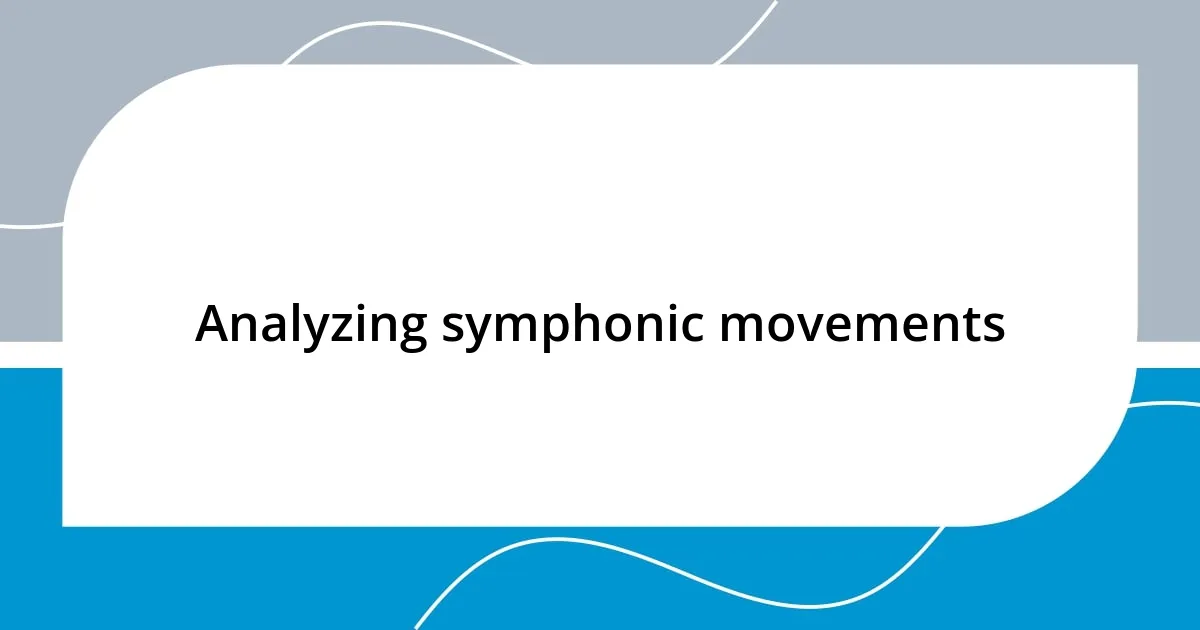
Analyzing symphonic movements
Analyzing symphonic movements offers a window into the heart of orchestral music. I’ve often found that every movement serves as a chapter in a larger story, each one carrying its own distinct mood and narrative arc. For instance, when I dissected a minuet from a classical symphony, I was struck by the balance of grace and rigidity, reflecting a dance between order and freedom. It left me pondering how composers encapsulate such complex human emotions in only a few measures.
Each symphonic movement often transitions through varying themes, creating an emotional landscape that surprises and delights. In my experience, listening to a slow movement, such as an adagio, provides a profound sense of introspection. I recall feeling as if time stood still during one memorable listening session, allowing me to contemplate not just the music itself but my own life’s contemplations and struggles. Isn’t it fascinating how a single melody can evoke memories of joy, sorrow, and everything in between?
Moreover, the interplay between different instruments within a movement adds another layer of richness. I’ve been captivated by how a poignant violin solo can suddenly give way to a thunderous brass segment, transforming the atmosphere instantly. Such contrasts keep me on the edge of my seat, almost like watching a drama unfold on stage. Have you ever felt that rush when the music you love shifts unexpectedly? That’s the magic of symphonic analysis: it teaches us to appreciate the intricacies of each movement and the emotions they convey.
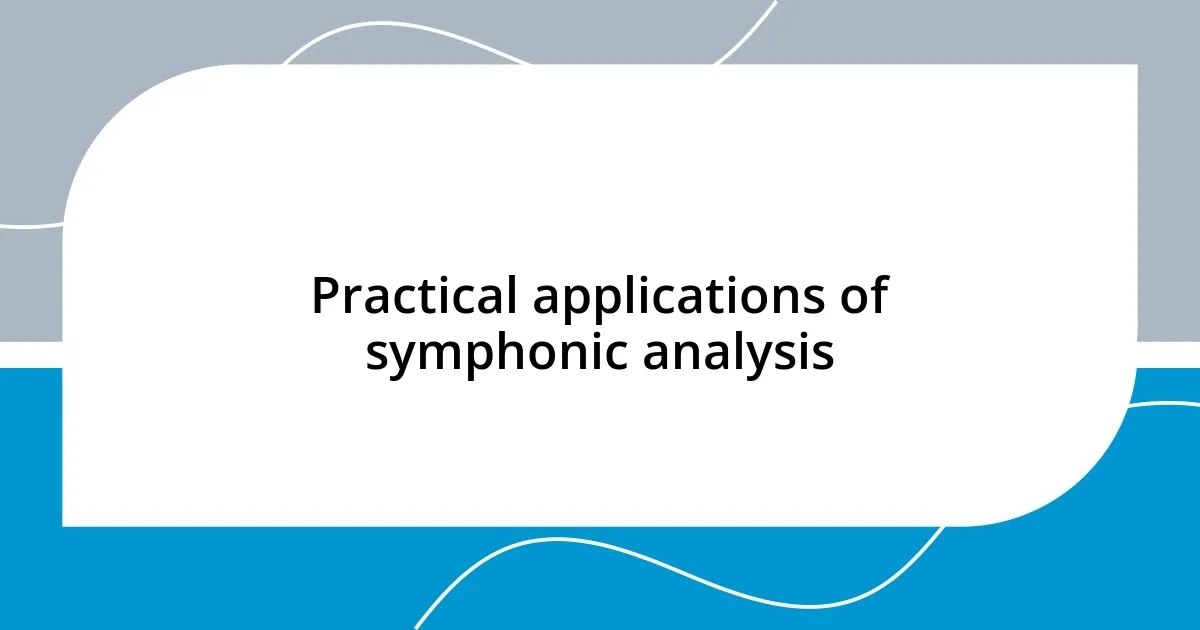
Practical applications of symphonic analysis
Understanding symphonic analysis has real-world applications that extend beyond the concert hall. For example, in my own experience, I’ve found that analyzing symphonic structures enhances my skills as a composer. When I studied the layers within Brahms’ symphonies, I noticed how he expertly built tension and resolution. This insight inspired me to apply similar techniques in my own compositions, creating pieces that evoke deeper emotional responses.
Additionally, I’ve seen symphonic analysis play a crucial role in education. Teaching students to recognize different forms—like sonata-allegro or theme and variations—empowers them to understand the broader context of musical works. I remember helping a group of high schoolers explore Dvořák’s Symphony No. 9. As they identified recurring themes, their engagement improved dramatically. It was a joy to witness their excitement as they began to “speak” the language of music.
Finally, the skills gleaned from symphonic analysis can enhance critical listening in various settings, from casual listening to formal auditions. I always encourage fellow musicians to approach symphonic works as if they were detectives piecing together a narrative. Have you ever considered how much richer your listening experience could be if you looked for specific motifs or orchestrational techniques? By applying this analytical lens, I’ve experienced a profound transformation in how I relate to and appreciate symphonic music, tapping into a deeper emotional connection with each performance.
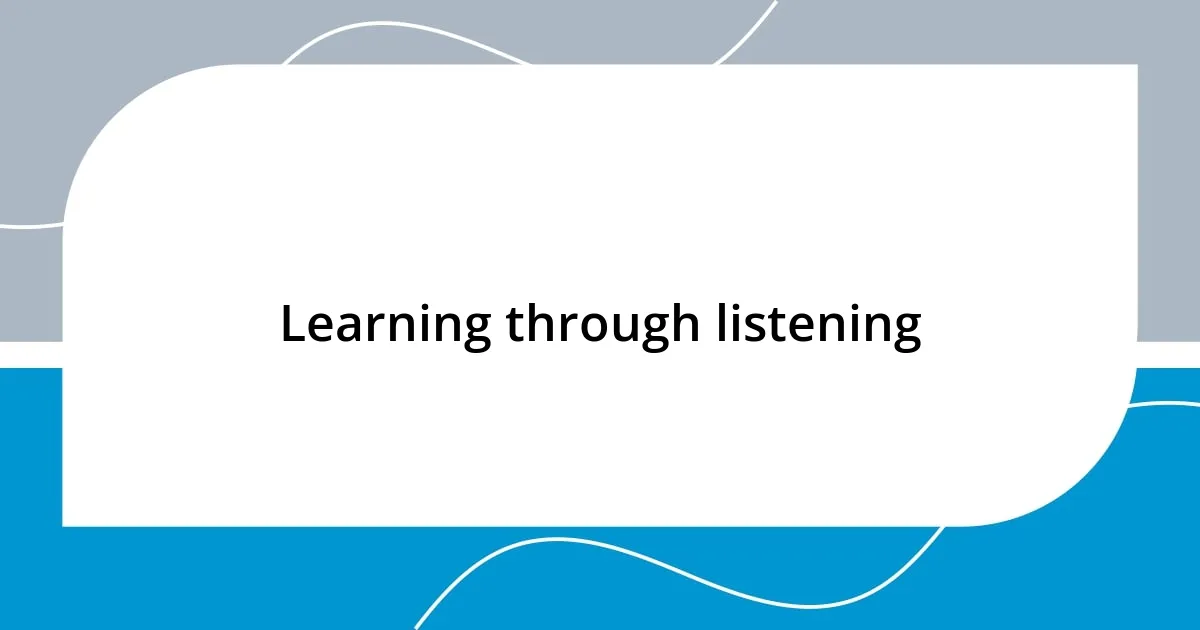
Learning through listening
Listening to symphonic music is like embarking on a journey where each note adds a new layer to the story unfolding before me. I vividly remember the first time I listened to Mahler’s Symphony No. 5; the intensity of the opening trumpet call left me breathless. It was a powerful reminder that sound alone can evoke such a visceral response, making me realize how profoundly music can impact our emotions and thoughts.
As I immersed myself in the nuances of orchestral pieces, I began to notice how the subtleties in dynamics and tempo shift can mirror life’s own unpredictability. For example, during one enriching listening session of Tchaikovsky’s Fourth Symphony, the tumultuous quiet of a sudden pause before a jubilant explosion of sound made me reflect on moments of tension and release in my life. Wouldn’t you agree that these musical moments serve as metaphors for our everyday experiences?
My experience of learning through listening has also taught me the importance of mindfulness. I’ve often found that simply closing my eyes and focusing on the intricate interplay between instruments brings a deeper understanding. I remember a time when I let myself just get lost in the lush harmonies of a Brahms symphony; it sparked a connection to my own creativity. This led me to wonder: how often do we give ourselves the space to truly hear? Engaging deeply with symphonic music reminds me to savor the beauty in complexity and simplicity, and I invite you to experience that as well.
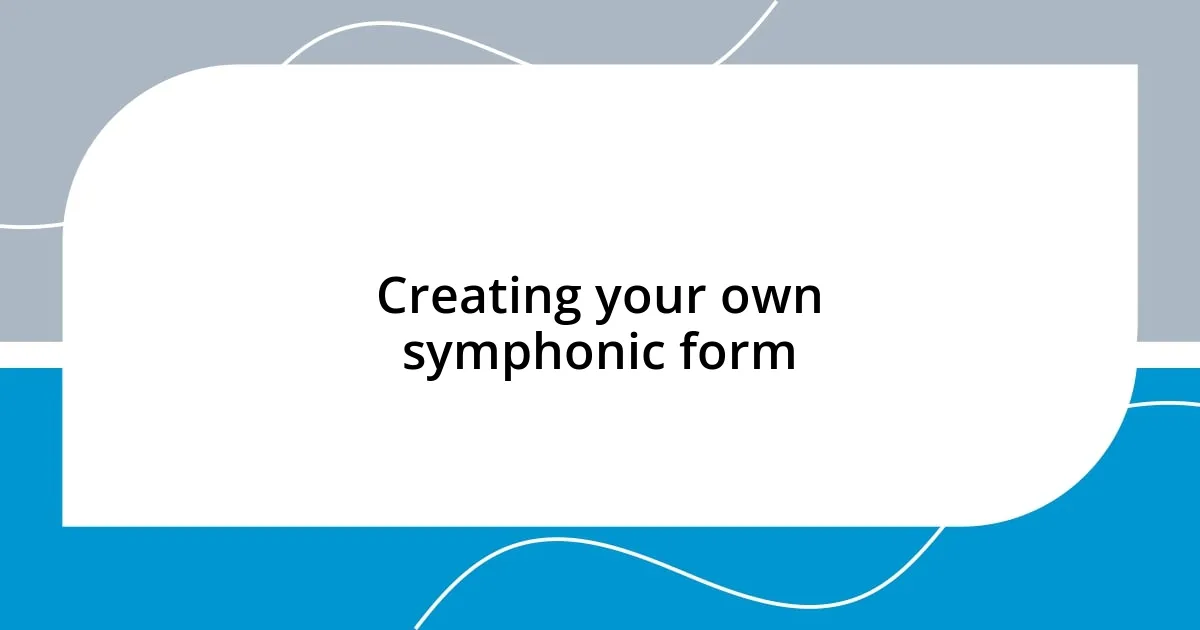
Creating your own symphonic form
Creating your own symphonic form can be an exhilarating journey that allows you to express your musical identity. When I first attempted to design a symphonic structure, I was overwhelmed yet thrilled. I decided to draw inspiration from several composers—each with their unique voice—but rather than copying them, I began to play with their ideas. How did I want my symphony to feel? That question guided my creativity, leading me to experiment with unexpected key changes and contrasting motifs.
One of my personal breakthroughs came when I let go of strict adherence to traditional forms. Instead, I sought to weave a narrative, much like telling a story with beginning, middle, and end. It’s a bit like sculpting in clay; initially, it may appear formless, but with every twist and turn, your vision becomes clearer. I remember composing a piece that began with a delicate, introspective theme, slowly escalating into a powerful orchestral eruption. Watching that evolution unfold felt magical, like painting with sound.
Don’t shy away from taking risks in your symphonic form. I once wrote a movement that utilized an unusual time signature, which definitely challenged my playing group. When it all came together, that tension transformed into a moment of pure elation as we performed it. This experience taught me that creativity thrives in the space of uncertainty. So, ask yourself: what surprises can you add to your symphonic creation? Embracing the unexpected might just lead you to your most authentic expression yet.


